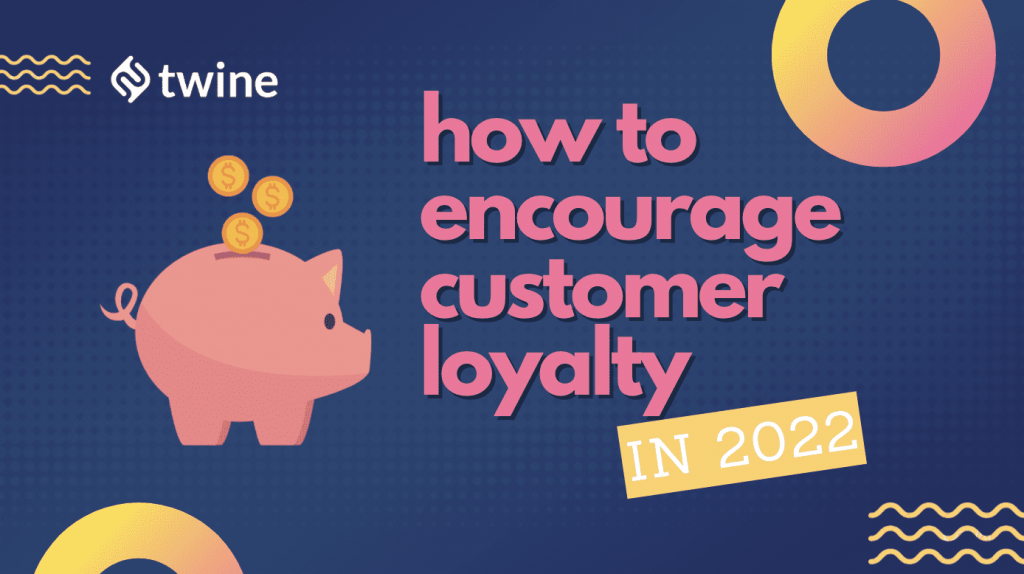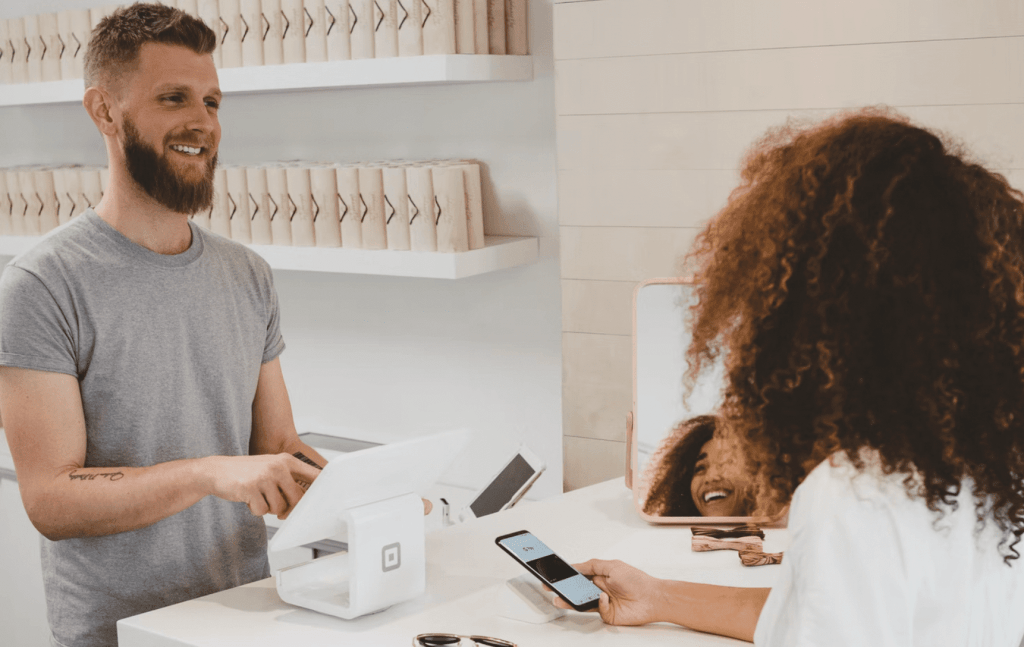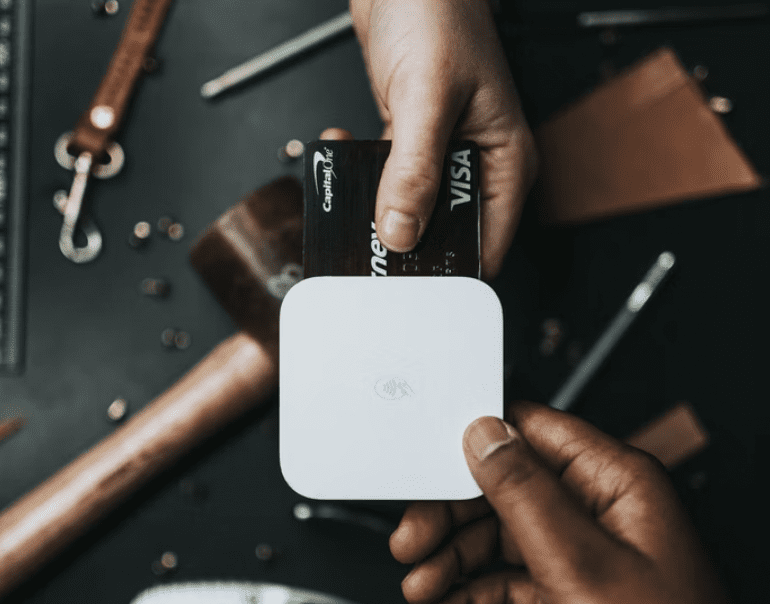
For more Business Management Tools, check out the Freelancer Toolkit…
Acquiring a new customer is five times more costly than retaining one. But what’s shocking is that 44% of businesses would rather spend that much to acquire a new customer. Only 18% spend their budget on customer loyalty.
So what’s in it for the latter group? They take a considerable chunk of the market because 20% of their current customers generate 80% of their business.
What does this mean to you?
Customer loyalty is becoming a backbone in marketing. You just need to know how to do it well. Lucky for you, that’s what this guide is for. Let’s get going.
But before we do that…
How To Measure Customer Loyalty

Here are some methods you can use to measure your customer loyalty:
Average Order Value (AOV)
As the name hints, the average order value measures the average total orders over a specified period.
To calculate your AOV, divide your total revenue by the number of orders.
For example, let’s say that in February, your store’s sale was $20,000, and you had 500 orders. Your AOV will be $20,000 divided by 500, which comes to $40.
This data tells you a lot about your customer purchasing habit. It shows you how your marketing efforts perform and how your pricing strategy affects your customers’ long-term value.
The data comes in handy if you want to find ways to increase loyalty for customers who have high AOV.
Net Promoter Score (NPS)
If you still use customer surveys, you need to stop using them. They just don’t work in this era.
Net Promoter Scores is the new model of collecting customer feedback as it gives a lot more insights. The metric tries to ask a crucial question: How likely will your customers refer you to their friends and relatives?
The Net Promoter score divides your customers into three segments.
The first segment is called promoters. These customers will easily give you a score of 9 or 10. They are more of your fans than customers and will enthusiastically refer you to their friends
The next lot is known as the passives and will rate your business 7 or 8. These customers might be satisfied with your product but won’t recommend it to their friends with enthusiasm.
Finally, we have the detractors who will give you a score lower than 6. These are dissatisfied customers who don’t like your product in most cases. As a result, they’re more than likely to damage your reputation by saying negative things about your brand.
Profitability Per Order (PP0)
PPO is a metric you use to calculate the amount of profit you’re making per order. To calculate your PPO, first, determine your overall profit margin.
Once you’ve got your figures, multiply it by the total revenue. Finally, divide it by the number of orders.
Purchase Frequency (PF)
The data you get from this study tells you how often your customers purchase from your business.
First, take the total number of purchases in your store over a specific period to find the figures. It can be monthly or annually. But the latter is far much better as it’s expensive hence giving accurate data.
You’ll then divide the total orders by the number of days. This metric is vital as it shows the level of customer loyalty and what you can do to keep it at its peak.
Now that you’ve analyzed the satisfaction of your customers, it’s time to make them loyal to your brand.
Here are seven things you can do:
1. Use a Loyalty Reward Program

Customers want to feel appreciated. As much as you’re giving them nice products, they’re also pouring money into your bank account, making you even.
So you have to do something more that makes them more special.
A loyalty program is the most reliable option to use. Typically, it means rewarding your loyal customers with unique offers, discounts, and gifts for special occasions.
A good example of a loyalty program is through punch cards. That’s how the king of Coffee, Starbucks, has stayed on the top for decades now.
In 2016, the company gave punch cards to students at Moffet library. After purchasing five drinks, the punch card allowed the students to receive their sixth drink free.
Suppose you’re running a store, whether online or brick-and-mortar stores, you can develop a points-back system of reward. It’s whereby customers earn points each time they purchase something from your store.
They can later “change” the points into money and purchase something from your store. For instance, 10 dollars can be one point. So if the customer purchases goods worth 10,000 dollars in a year, that will be 1000 points which can be worth $100.
2. Have a Top-notch Customer Experience

86% of customers are willing to pay you more if you have good customer service.
That’s why 45.9% of companies have put customer experience as their main priority compared to the 33.6% who have focused on improving their product.
Today’s customers have a lot of power. They can access information with the click of a button. In the same manner, they can quickly jump from your business to your competitor.
In a nutshell, the brand that wins the customer service game takes the largest market share. Now this means that you should go the extra mile.
For example, if you’re a software business, don’t send your customers to your “help articles” when they encounter a technical problem. Instead, have technical support on the phone to mend the issue.
Let me put it into more perspective. When your car breaks down, and you call your mechanic, he doesn’t send you a car’s manual to fix it on your own. He has to come and take a look to find out the problem.
Customers remember when they’re treated well. And they also remember when you treat them poorly. Make the best impression, and they’ll be regular buyers.
3. Create a Reward-Based Referral Program

Referral programs are great. While it’s a tool for acquiring new customers, you can use it to seal the trust of your current customers by giving out incentives.
If done well, this can be a win-win. Your current customers receive something small that they’ll appreciate while getting new customers for your brand.
Several brands have used this method to boost their revenue with a tiny budget for marketing.
That’s how Evernote, the note-taking app, skyrocketed to the skies. Out of their 225 million customers, 29 million were referrals.
How they structure their referral program is quite simple. You’re awarded points whenever you refer a friend. You can then redeem these points for free to access features only available on the premium plan.
In addition, you get more points each time the person you referred upgrades to the premium plan.
Bombas also has a robust referral system which they do differently, though. If you successfully refer a friend, they’ll get 25% off on their first purchase while you get $20 to purchase a product for yourself.
Using a powerful referral program is like hitting two birds with one stone.
A good incentive will attract current customers to join the program which encourages loyalty. On the other hand, you’ll be getting new customers on auto-pilot through word-of-mouth marketing.
4. Create an Affiliate Program

An affiliate program and referral program have the same theme: to penetrate a new market using existing customers. However, the former is more expansive and can reach a wider audience.
While it has a lower impact on customer loyalty per se, it’s the best option to make fans out of your customers. Of course, this is only possible if you have a good product and an attractive commission.
So how does an affiliate program work?
First, you create customized affiliate links. Next, give it to your customers interested in referring your product to their audience. At this point, these customers become affiliates.
If someone purchases your product using the affiliate links, the customer who did the referral gets a percentage commission for the sale. In most cases, the commission is between 5-30%. For instance, if your product goes for $100, the affiliate can get anywhere between $5 to $30.
An affiliate program is far more effective when you’re selling a software product with monthly payments.
How Clickfunnels Is Winning The Affiliate Game
Talking about software, Clickfunnels is a perfect example. It has an attractive affiliate program that seals customer loyalty which later helps the company widen its customer base.
Most of Clickfunnel’s customers are raving fans. As a result, the SaaS company has an army of affiliates who are their customers but have managed to push numbers to over 100,000 paying users.
The program is successful because Clickfunnels has an attractive affiliate program with a 40% recurring commission. With the product going for $97 and $297/month, affiliates can easily make six figures by referring many people.
5. Personalize Your Marketing Campaigns

As said earlier, today’s customer is well-informed. They know what they want and can quickly get information with a simple Google search.
But since they’re bombarded with multiple options, they need more attention to keep coming back to your product.
This means they don’t want to be put in a group. Everyone wants to address their unique questions, needs, and preferences. In short, today’s customer needs personalized marketing that speaks to them.
Now, this isn’t practical at the top of the marketing funnel. You can’t create personalized infographics for all your social media followers.
However, as they move down the funnel, you get to know who you’re targeting and their unique needs.
For example, let’s assume you have 2000 subscribers who gave in to your email marketing efforts. Since they are at the bottom of the funnel, you have much information like preferences, location, purchase history, and the time they like to shop.
Getting this data is a walk in the park, as the email service providers give them freely.
With these insights, you can create a targeted email campaign that hits all their pain points. Doing this over and over again makes your brand relevant to your customers. They’ll see you as a credible source of information and, therefore, the most reliable seller.
6. Use Social Proof

Social proof is the positive influence you create when someone sees the excellent job you’re doing.
In his book, Influence: The Psychology of Persuasion, Robert Cialdini says that people often make judgments based on their overall impression of someone else.
In short, social proof is like batman to a four-year-old boy. The boy will believe that he can do anything when he puts on Batman’s suit.
So how does it come into play in boosting customer loyalty?
The answer can be in three ways as follows.
7. User Reviews/ Testimonials
By having your past customers recommend your products, new customers will feel like they’re in the right place.
They tend to believe the customer testimonials since they come from people who have succeeded in using your product.
8. Celebrity Endorsement
Everyone has role models who they look up to. Having one of them talk nicely about your product can go a long way in making customers trust your brand.
Imagine how many loyal customers you’ll get if Dwayne “The Rock” Johnson recommends your energy drink.
And It’s not a must for celebrities to be your customers. That’s what influencer marketing is for. You can reach them via social media or find their emails on Instagram to strike up a conversation.
9. Use of Expert Statistics
More people are skeptical when claims are made without credible sources to back them up. Stats are vital in sealing customer loyalty, making them believe in what you’re doing. Don’t say your brand has served a million users; show us the claims from a verified source.
Conclusion
There’s a lot you can do to encourage customer loyalty. While some of it is dependent on improving your product’s value, that method doesn’t yield much fruit. They’ll soon see a better product and run away.
You have to play with what they care about – talk of customer service, pricing, incentives, and more. There you go, try the tips above and see how it goes.
Ready to hire? Our marketplace of over 410,000 diverse freelancers has the skills and expertise needed to skyrocket your business. From marketers to designers, copywriters to SEO experts – browse the talented bunch here!








